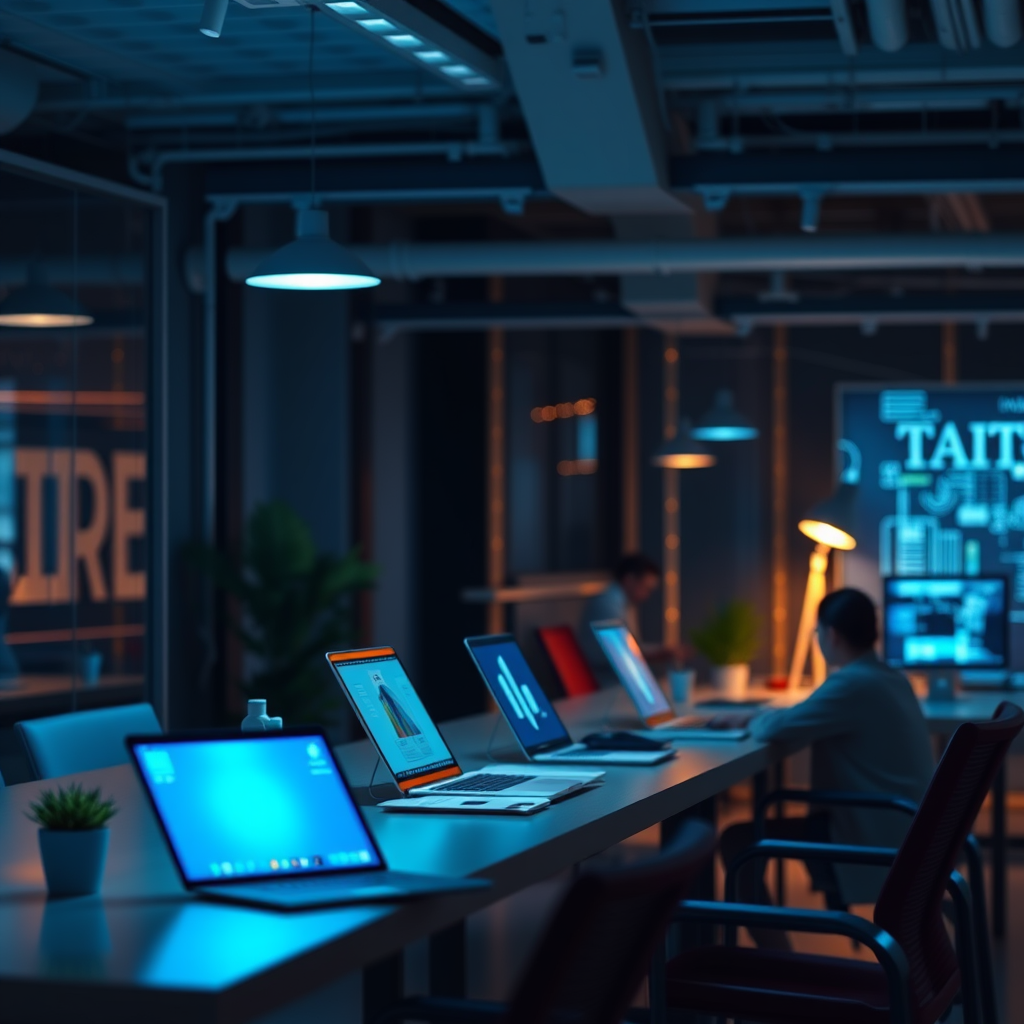5 Ways Smart Tech is Revolutionizing Modern Workspaces in 2025
How Smart Tech is Shaping Collaborative Workspaces
Smart tech is transforming how teams connect and collaborate in modern offices. Advanced communication tools, powered by AI and IoT, enable seamless interactions regardless of physical location. Virtual meeting platforms equipped with features like real-time transcription and translation eliminate language barriers and improve accessibility.
The rise of interactive smart whiteboards and shared digital workspaces allows multiple users to contribute ideas simultaneously, enhancing creativity and productivity. For example, companies deploying smart rooms experience up to 30% faster decision-making due to instant access to collaborative tools.
– Smart collaboration platforms integrate chat, video, file sharing, and project management in one interface.
– AI assistants can schedule meetings based on participants’ calendars and preferences.
– Noise-cancelling smart speaker systems create distraction-free zones for focused discussions.
These innovations foster more connected teams, break down silos, and build agile workflows that adapt to fast-changing business demands.
Enhancing Workplace Comfort and Sustainability with Smart Tech
Environmental control systems embedded with smart tech revolutionize how offices manage energy use and employee wellbeing. Sensors continuously monitor temperature, humidity, lighting, and air quality, automatically adjusting settings to maintain optimal conditions.
Beyond comfort, these intelligent systems help reduce energy consumption significantly. Studies show smart HVAC (Heating, Ventilation, and Air Conditioning) and lighting controls can cut electricity use by up to 40%, contributing to greener office practices.
Key Smart Environmental Features
– Automated window blinds and LED lighting that adjust based on natural light availability.
– Occupancy sensors that turn off unused devices and lights in real time.
– Air quality monitors that trigger ventilation when pollutants or allergens exceed safe levels.
When employees enjoy a healthier, more comfortable environment, productivity and job satisfaction improve. Businesses also benefit from lower operational costs and enhanced corporate social responsibility.
Boosting Productivity Through AI-Driven Smart Tech
Artificial intelligence integrated into workplace technologies is a major driver of increased productivity in 2025. Smart tech not only automates repetitive tasks but also provides insights to optimize workflows and prioritize work effectively.
Smart Tech Applications in Daily Operations
– AI scheduling assistants that minimize calendar conflicts and downtime.
– Intelligent document management systems with automatic tagging and retrieval.
– Predictive analytics tools that forecast project risks and resource needs.
By reducing the time spent on administrative chores, employees can focus on higher-value activities like innovation and customer engagement. Additionally, personalized AI recommendations help workers manage stress and maintain balanced workloads.
Securing Modern Offices with Smart Tech Solutions
Security has become increasingly sophisticated thanks to smart tech innovations. IoT sensors, biometric access controls, and AI-powered surveillance systems are now standard components in safeguarding sensitive information and physical assets.
Real-time monitoring detects anomalies instantly, triggering alerts or automated lockdowns as necessary. For example, facial recognition technology streamlines secure entry while maintaining an audit trail.
Components of Smart Security Systems
– Multi-factor authentication for device and network access.
– AI-based video analytics to identify unusual activities or unauthorized personnel.
– Cloud-connected data encryption and threat detection for remote work protection.
Implementing layered smart security measures helps companies reduce breaches and maintain regulatory compliance amid rising cyber risks in hybrid work environments.
Personalizing the Employee Experience with Smart Tech
Smart tech also plays a pivotal role in customizing the workday around individual needs and preferences. From ergonomic desks that adjust automatically to wellness apps that track activity levels, technology caters to holistic employee wellbeing.
Wearable devices integrated with office networks collect data on posture, stress, and productivity patterns. Managers use these insights to tailor breaks, workloads, and wellness programs that boost engagement and reduce burnout.
Companies investing in personalized smart tech solutions report higher employee retention and morale. These innovations recognize that a modern workspace is not one-size-fits-all but dynamically adapts to empower every worker.
Examples of Personalization Through Smart Tech
– Smart lighting systems that adjust color temperature based on circadian rhythms.
– AI-driven learning platforms offering personalized professional development.
– Voice-activated virtual assistants helping employees with task management.
Such thoughtful integration of technology transforms the office into a proactive partner in supporting employee success.
Looking Ahead: Smart Tech as a Catalyst for Future Workspaces
The adoption of smart tech in workplaces is not just a trend but a fundamental shift toward more intelligent, efficient, and human-centered environments. As companies continue embracing these tools, expect ongoing innovations enhancing connectivity, sustainability, security, and personalization.
Staying ahead means investing in adaptable smart tech systems that grow with organizational needs. Leaders who prioritize technology-driven transformation will unlock new levels of agility and competitive advantage.
Embracing smart tech today prepares your workspace for tomorrow’s challenges and opportunities.














Post Comment